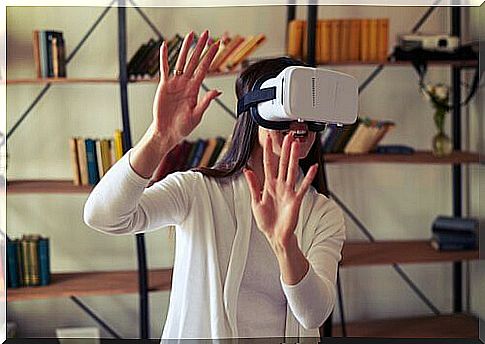The Therapeutic Use Of New Technologies

They have definitely transformed our way of life, our habits and our customs, but have you ever stopped to think about the therapeutic use of new technologies?
Now we are not able to leave the house without our smartphone and we constantly check our email and social networks. New technology is here to stay, among other reasons why we are already building parts of our lives around these tools.
There are many nostalgic people who deny this new form of communication and all that it involves. However, one thing is undeniable: with new technologies, our quality of life can be – and not necessarily already is – much better. In the field of psychology, the therapeutic use of new technologies is increasingly present.
In some situations, they are used because they reduce costs, because they allow to reconcile therapy with the lives of very busy patients or those who travel constantly, or because with them we can simulate different exposure situations of human beings with great control over the characteristics of these situations. In this sense, technological tools within psychology are beginning to be applied to therapy with different disorders, such as phobias, Alzheimer’s, anxiety disorders or obsessive-compulsive disorders.

The therapeutic use of new technologies in the treatment of phobias
From the perspective of the cognitive-behavioral psychological current, one of the strategies to “treat” phobias is exposure to the object element of the phobia. In the case of some phobias the actual exposure can be complicated or very dangerous, but the therapeutic use of new technologies can simulate this situation. Regarding the phobia of flying, for example, flight simulators are used very similar to those used by pilots in their practices.
Virtual reality can be a useful way of making successive approaches to the object or situation you are afraid of. You can apply this strategy with animal phobias, high places, or public speaking. These types of strategies are increasingly used thanks to the fact that technology allows us to immerse ourselves in the virtual world that are increasingly realistic.
Another advantage of its use is the possibility to continue the therapy at home. Even if technology does not replace a therapist, it is possible to send “tasks” to be done at home. This is a resource that can be cost effective in terms of time and sometimes money, as can be using a flight simulator. This is not the only tool used to deal with phobias, but it can be a good adjunct to therapy.
Cognitive stimulation on the computer
Cognitive stimulation is a type of intervention that aims to exercise cognitive functions. This strategy can be used to reinforce or improve functions that are affected due to some pathology. It is normally used in dementias, with memory, language or cognitive functions being the most worked on aspects.
A large number of cognitive stimulation programs have been developed using tablets and computers. In the beginning, dementias were the main objective, but nowadays they are applied to other pathologies, such as attention deficit hyperactivity disorder, stroke or traumatic brain injury. This type of program is very versatile and allows for customization of tasks at a low cost.
For certain portions of the population, such as the elderly, using new technologies is a form of stimulation in itself, as they need to become familiar with their use. There are several scientific studies that support the use of cognitive stimulation with new technologies and these are used in many nursing homes, with positive results.

Future perspectives for the therapeutic use of new technologies
Like everything around us, technology promises to be increasingly present in the field of psychological therapies. For example, these days there are psychologists who offer therapy sessions over Skype or there are already specific applications designed to keep track of our state of mind. On the market, you can find several apps that promise to contribute to our mental health. In this sense, the most important thing in the face of this growing offer is knowing how to identify which ones can be useful for our lives.
Not all apps deliver on the initial promise to improve our mental health. When using this type of tool, it is important to look for studies that support what they want to sell us. In any case, an app can never replace a professional. They can be useful as tools or resources, facilitators or enhancers of the effects of a therapy, but they will never be the same as a psychologist.
Finally, it is worth highlighting the role of technology in administering psychometric tests. In this sense, technology can greatly speed up the analysis phase. The advantage of these computerized tests is that they give the result immediately. In this way, the psychologist no longer needs to correct the test, only interpret the results and relate them to those of other tests or assessment instruments. Thus, the professional can dedicate this extra time to carry out a more accurate assessment.









